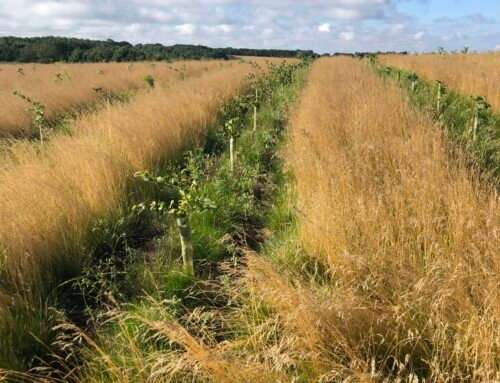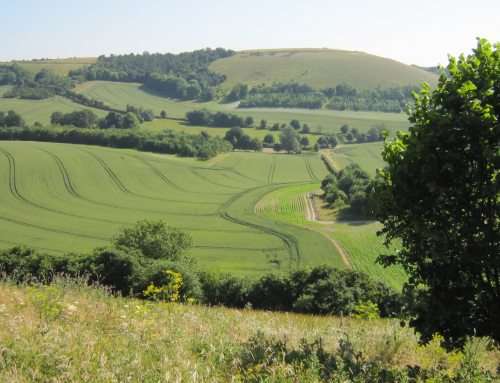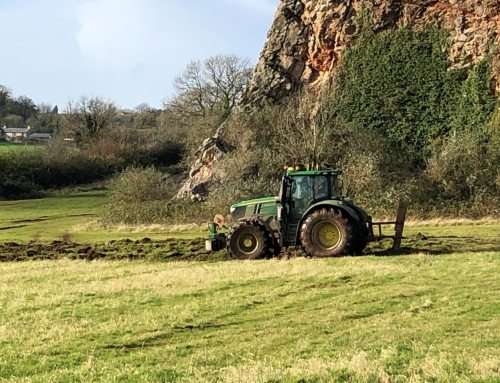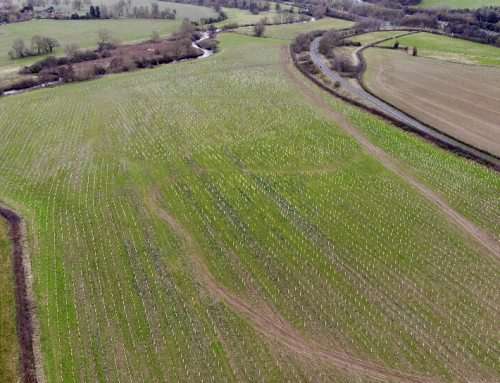Combining Leisure With Nature Through Biodiverse Holiday Parks
Site: Rockingham Forest Park
Client: Rockingham Forest Park Ltd
Departments Involved: Ecology, Landscape Architecture, Forestry
Overview
The proposed development near the former RAF Kings Cliffe site aimed to transform seemingly ecologically low-value grazing land into a luxurious holiday park integrated with nature. Situated between ancient woodlands and limestone quarry remnants, the area housed both protected species and habitats.
Thorough Environmental Impact Assessments and collaboration with stakeholders supported the planning application, considering impacts on designated sites and species. A comprehensive suite of surveys from our ecology, landscape architecture, and arboriculture teams covered habitats, protected species, tree risk, and landscape visual impact.
An ecologically focused landscape design prioritised biodiversity, including the creation of species-rich hedgerows and grassland. Ongoing efforts involve managing and monitoring habitats to assess the development’s impact and fostering collaboration with local partners for sustainable, biodiversity-focused development.
Context
Objectives aimed to change former grazing land initially considered ecologically low in value into a luxurious holiday experience integrated with nature and the local surroundings. The focus was to design infrastructure that would allow the public a respite from day-to-day responsibilities in comfort, whilst creating a mosaic of natural and enhanced habitats within the surroundings.
The development site was situated between two blocks of ancient woodland designated as Local Wildlife Sites which provided habitats for a diverse range of bird, bat, and invertebrate species. The broader park showcased a history of limestone quarrying and featured regenerating habitats, deep gullies, and lakes. It housed a thriving population of great crested newts and comprised grassland habitats designated as Local Wildlife Sites. Comprehensive evaluations of environmental impacts and collaborative working across various disciplines and stakeholders were essential in the support of the planning application.



Challenges
A suite of protected species surveys were required to support the application and involved thorough scoping of the site and wider landscape. The development was situated between two designated sites and would likely impact the notable features because of the construction works. Bat activity was determined along the woodland edges, and a bat roost was identified within the cottage onsite.
Great crested newt presence within the wider landscape posed a potential issue for site clearance. An area of grassland within the site was found to be designated as a protected Local Wildlife Site, with ancient trees and old quarry remnants surrounding the proposed development resulting in the need for further advice.
What We Did
Our teams conducted comprehensive surveys covering habitats, protected species, tree risk, and landscape visual impact to support the planning application. At the core of the project was an ecologically focused landscape design incorporating species-rich hedgerows, grassland, and tree planting to enhance the existing site and harmonise with the surrounding landscapes. Ecological and arboriculture enhancement and management plans were implemented to protect the designated grassland, introduce tree protection measures, limit light exposure to bats, encompass prescriptions for landscape planting, and introduce provisions for monitoring habitat establishment and species. Collaboration with the landscape and arboriculture team aimed to reduce infrastructure impact on designated sites and species, and to develop new opportunities for green infrastructure networks through careful planning.
Suggestions were put forward to maintain biodiversity and protect environmental features. The project has fostered trust and active involvement from crucial environmental stakeholders through early and transparent collaboration with local partners. This is aimed at seamlessly incorporating biodiversity into planning and promoting sustainable development that harmonises with community requirements and environmental regulations.

Outcomes
Our ecology and arboriculture teams collaborated with our design team to successfully craft a sustainable design plan that prioritises biodiversity and considers broader conservation aspects. The approach involved retaining ecologically important habitats, creating new opportunities for wildlife connectivity through a network of corridors, engaging with stakeholders, and implementing management plans. Notable outcomes include the planting of native wildflowers that will benefit pollinating invertebrates, the implementation of a mowing regime for the designated area of grassland, mitigation measures for staged vegetation clearance to avoid potential impacts to both amphibians and reptiles and the planting of native species-rich hedgerows to provide additional connectivity corridors for wildlife.
Our commitment to enhancing biodiversity reflects our dedication to implementing a positive environmental impact. This collaborative approach between our ecology and arboriculture team has supported our design team to develop a high-quality, sustainably led masterplan for the site that serves as a model for development projects with a vision to increase environmental preservation whilst satisfying consumer needs, emphasising long-term sustainability and responsibility.
Ongoing efforts will focus on managing and monitoring these habitats under the guidance of our team to evaluate the development’s impact on the wider landscape and to ensure consistent adherence to environmental goals.
Highlights
- Ecologically focused landscape design.
- Promotion of biodiversity by creating and retaining valuable habitats.
- Expansion and creation of wildlife corridors to connect ecosystems across the wider landscape.
- Retention of a known bat roost location.
- Protection of veteran trees.






